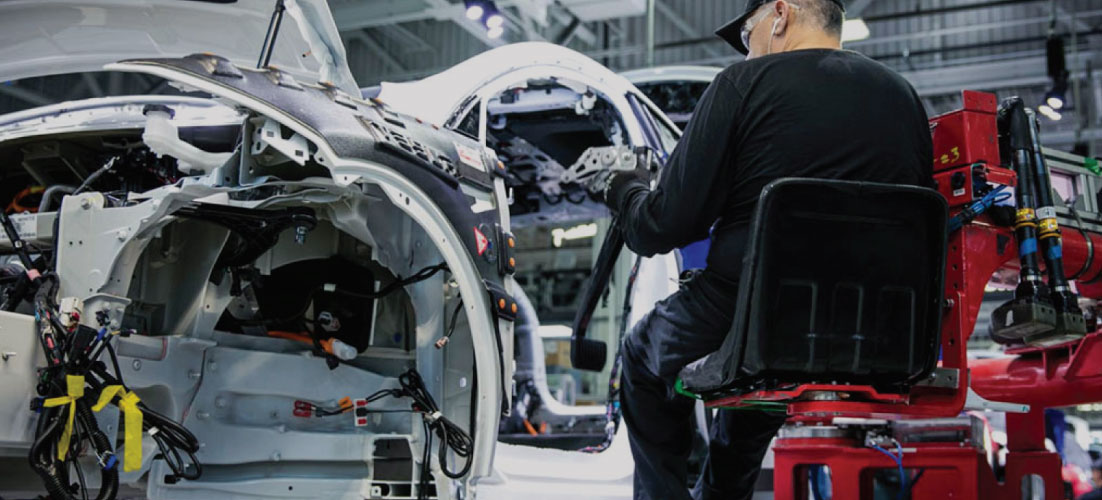
PUBLISHED
August 2, 2018
WRITTEN BY
Adrian Bartha – eCompliance
Chief Executive Officer
Tesla has been a punching bag lately, with several safety challenges grabbing headlines across the world.
From my experience, I can tell you that their problems are common for nearly any company experiencing aggressive scaling and expansion.
Instead of asking whether the criticism of Tesla is warranted or not, let’s ask what we can learn from them.
Tesla appears to be facing two simultaneous safety challenges that I’ve personally seen in countless safety cultures: a high-growth workforce and its agile manufacturing environment.
1. A High-Growth (and High-Turnover) Workforce
Is Tesla growing too fast for any safety culture to reasonably keep up?
Their current pace makes it more difficult to sufficiently train new employees in time, relative to other automotive workforces.
This is certainly a problem we’ve seen many companies share. Even large and stable companies will have divisions, facilities or departments that are undergoing rapid-growth.
It’s hard for high-growth companies to ensure their new employees are trained. But it’s even harder to create a strong safety culture foundation where the right knowledge is transferred to all the newbies.
Tesla is particularly vulnerable to this because of the sheer rate they’re hiring and training employees. Most automotive factories will train their new hires in a few months; Tesla trains their new hires in a few days.
You can’t build the right type of safety culture if your most tenured employees have only been on the floor for a few months. They simply don’t have the experience to anticipate hazards, or recognize problems in the early stages.
So, how do you transfer knowledge in high-growth or high-turnover environments? Codifying knowledge into policies, procedures, and training materials is critical, but they can only get you so far.
Could safety ambassadors or non-safety front-line leaders in the organization be identified to team up with new employees to create the right mix on crews and teams? Probably. This relies on good safety/ training systems to operationalize on a repeatable basis.
The good news is building creative processes to identify the right people to link together is something that makes the organization more scalable and can accelerate the culture building we all need to get the job done right (and safely).
2. An ‘Agile’ Manufacturing Environment Constantly Creates New Hazards
Agile environments speed up the rate at which new hazards are introduced, changed or eliminated in the manufacturing process.
Once again, this problem is not unique to Tesla, but their application of “agile” software development practices into production raises some concerns.
Agile practices are more commonly referred to in software development. Essentially, it anticipates the need for flexibility and focuses on delivering individual pieces, not on the entire product; requiring a very short feedback loop and adaptation cycle.
The difference between being agile when writing code and being agile on the plant floor is that the #1 asset is human lives. Each configuration and process change on the plant floor can create or eliminate hazards for people who behave very differently than code! These people need time to evolve their situational awareness and knowledge of their environments.
Bad habits may be hard to kill, but neutral habits (like how to walk around a shop floor with forklifts and robots frequently changing direction) may be even harder. Situational awareness of hazards is not quick to be ingrained in us.
However, the instant notification and communication of hazards is possible if the front-line hazard recognition is operationalised through easy-to-use systems.
The Weight of Expectation
Is Tesla suffering from the weight of the pressure for production from Wall Street and hurting its employees in the process? Or is it the pressure to get the innovative manufacturing system right and prove that a new way of manufacturing is going to revolutionize how we build cars (and everything else)?
We all hope that it is the latter and that the safety of their colleagues is at the heart of the design principles for a safer and more productive manufacturing model.
Rethinking Safety
Drive employee engagement by connecting
your frontline to your boardroom.
Find Out How eCompliance Helped Zip Signs Achieve COR Certification.
READ CASE STUDY →